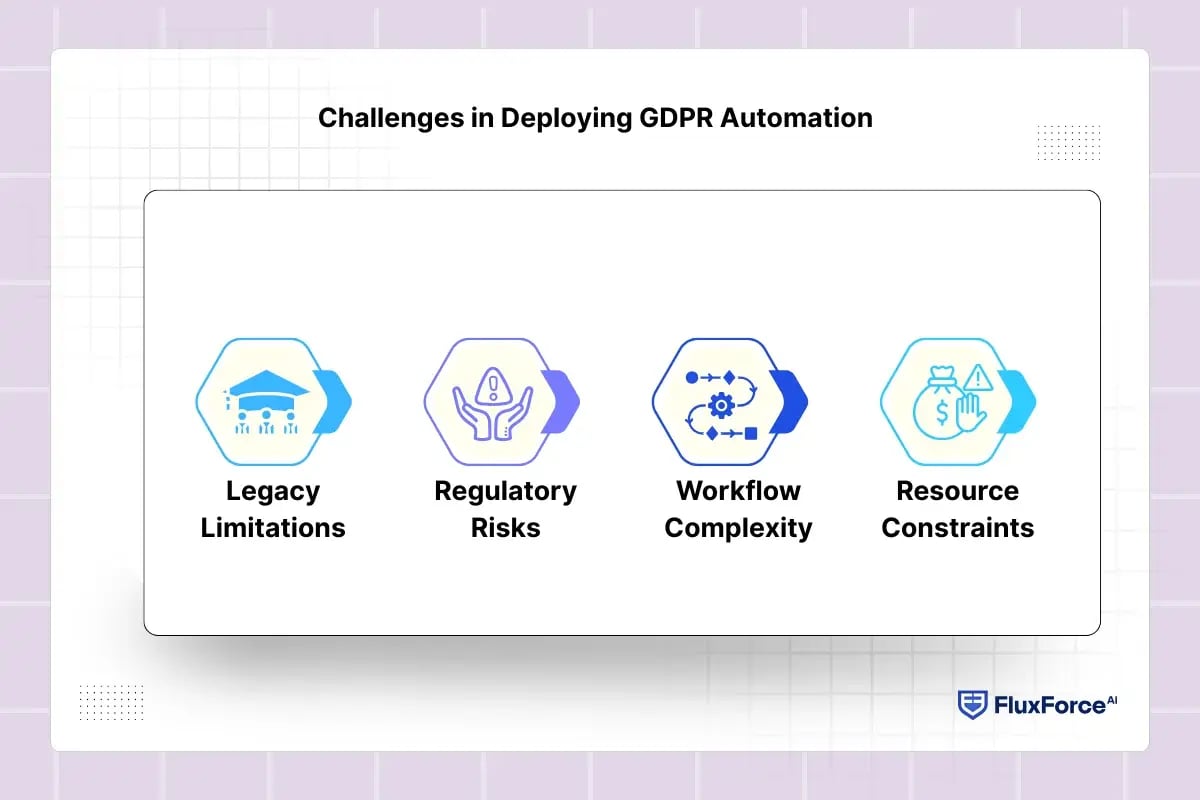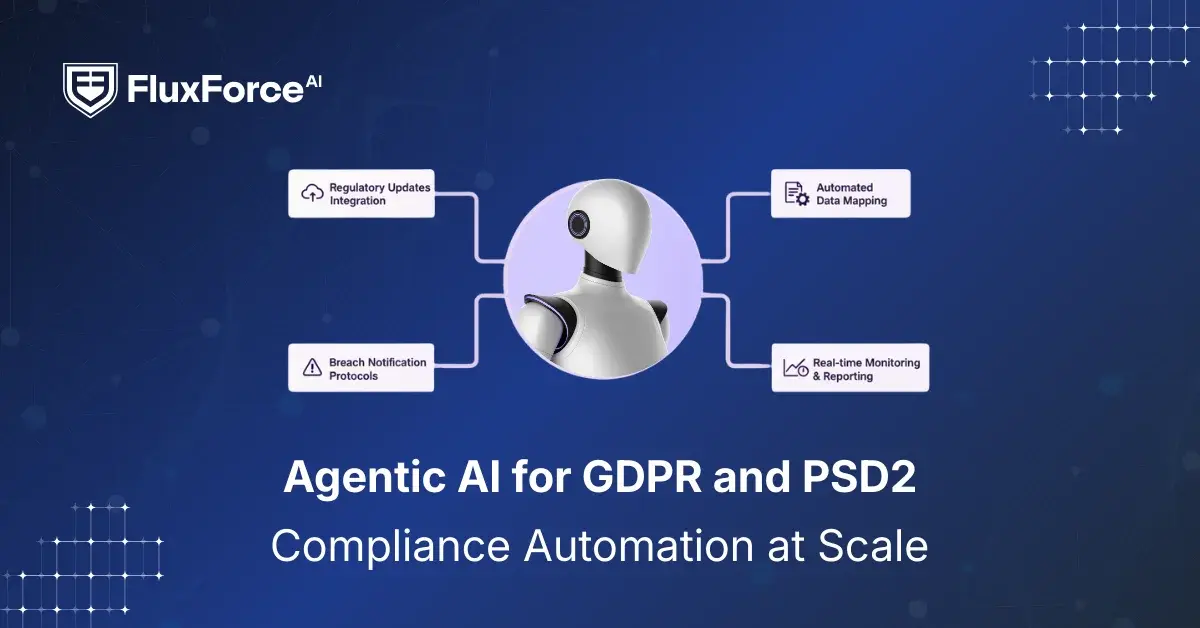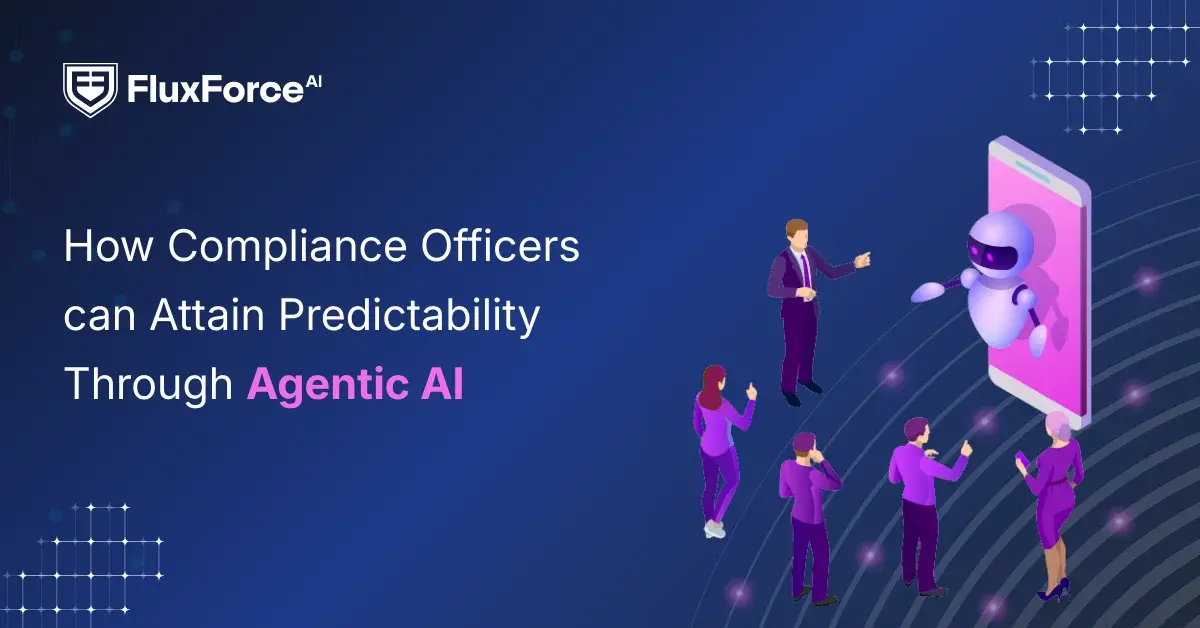Listen to our podcast 🎧

Introduction
Compliance incidents commonly arise in the insurance sector during claims processing, as the process involves accessing clusters of sensitive customer data. In Europe, where data security is strictly governed by the General Data Protection Regulation (GDPR), maintaining compliance at scale presents a significant challenge for risk officers.
Traditional claims processing methods struggle with ensuring data protection, validating consent, and enforcing timely deletion. Automating workflows of claims processing integrates GDPR compliance directly into operational frameworks.
From consistent consent validation to audit-ready trails and real-time monitoring, automation optimizes compliance while maintaining claim cycle efficiency.
This article provides a deep dive into how automation strengthens GDPR compliance in claims processing, explores the risks, challenges, and highlights best practices to help insurers achieve both regulatory assurance and operational efficiency.
GDPR Obligations & Gaps Within the Claims Processing Lifecycle

The process of initiating and handling a claim request requires insurers to access multiple categories of sensitive personal data. Under the General Data Protection Regulation, insurers must manage this information within strict principles of lawfulness, fairness, transparency, and data minimization.
For risk officers, the challenges at several points in the claims lifecycle arise due to manual procedures:
1. Consent Management – Under GDPR, consent must be transparently captured, tracked, and withdrawn if requested by the policyholder. Manual handling creates delays and increases the risk of missing valid withdrawals.
2. Data Retention and Deletion – Article 5(1)(e) mandates data deletion once the lawful purpose has been fulfilled. In manual workflows, deletion tasks are often overlooked, leaving sensitive data unnecessarily exposed.
3. Audit Trail Requirements – Insurers must maintain complete and verifiable records to prove compliance during internal or regulatory audits. Manual record-keeping is prone to errors and lacks consistency.
4. Data Minimization – Only data strictly necessary for claims assessment should be collected and processed, in line with Article 5(1)(c). Over-collection of data is a recurring compliance gap.
5. Third-Party Data Sharing – Claims often involve processors and external service providers. Without contractual safeguards and monitoring, insurers risk non-compliance through partner data mishandling.
6. Security of Processing – Article 32 requires insurers to apply strong technical and organizational measures for data security. Manual systems often fall short of modern security measures, such as encryption or access control.
Automation offers a smart way to address these gaps systematically by embedding GDPR obligations directly into claims workflows.

Shaping the Future of AI in Finance
Fluxforce research uncovers how banks and enterprises are adapting to fraud, compliance, and data challenges in 2025.
Leveraging AI and Workflow Automation for GDPR Compliance

Integrating Artificial Intelligence (AI) and Robotic Process Automation (RPA) enables automated workflows that strengthen GDPR compliance across the claims ecosystem (be it medical claims processing or car insurance claims). Benefits of AI and automation in compliant claims processing include:
1. Automated Consent and Privacy Management
Rather than manually tracking content updates, AI systems auto capture and track policyholder consent in real time. They instantly update withdrawals and keep records accurate. This ensures GDPR compliance across all claims workflows.
2. Efficient Data Subject Rights Fulfilment
Automation speeds up requests for data access, corrections, or deletion. RPA tools locate records quickly and apply changes in real-time. They also provide confirmation logs, helping insurers prove GDPR compliance.
3. Data Minimization and Intelligent Classification
AI tools scan claims data to ensure only essential information is captured. Non-required data is flagged or removed automatically. This way, insurers reduce risk while keeping data storage practices clean and compliant.
4. Continuous Monitoring and Audit-Ready Records
AI-powered automation tools consistently track data usage to identify hidden fraud patterns and flag them real-time. Moreover, they create structured, time-stamped audit records for all actions to help insurers demonstrate error-free accountability and readiness during internal audits.
5. Enhanced Security and Risk Mitigation
Automation applies modern security techniques, such as encryption, access controls, and monitoring to ensure data security across claims workflows. These measures support GDPR Article 32 requirements that focus on reducing exposure to breaches.
Case Study: Real World Examples of GDPR-Compliant Claims Automation
Automated claims processing with GDPR-compliant workflows demonstrates how insurers can securely manage sensitive data while meeting regulatory standards. Below are some real-world adoption highlights that prove the power of AI and automation.
1. Automated Medical Claims Processing in Germany
A German health insurer faced compliance issues with patient records. Manual workflows caused delays in fulfilling data subject requests and increased exposure to GDPR penalties.
Solution
- Introduced RPA bots for data subject access and deletion requests.
- Integrated AI-driven classification to minimize unnecessary data storage.
- The solution provided an automated audit trail for regulator-ready reporting.
Results
- 40% faster response to patient data access requests.
- Full compliance with GDPR data retention and deletion timelines.
2. AI-Driven Motor Insurance Claims in France
A renowned France-based motor insurance company struggled with consent tracking and third-party data sharing. Traditional consent withdrawal approaches were often inefficient and caused oversight.
Solution
-
Implemented centralized AI-based consent management across all claims workflows.
-
Applied automated monitoring of third-party processors for GDPR contract adherence.
-
Deployed encryption and access control automation in claims systems.
Results
-
Near 100% accuracy in consent tracking and updates.
-
Reduced compliance incidents linked to third-party data handling.
-
Enhanced customer trust and improved operational resilience.
Challenges in Deploying GDPR Automation

1. Legacy Limitations: Older claim systems cannot easily integrate with modern automation tools. This slows GDPR compliance adoption and adds costly upgrade requirements.
2. Regulatory Risks: Frequent GDPR updates increase non-compliance risk. Organizations must constantly update automation models, which adds burden.
3. Workflow Complexity: Claims involve multiple stakeholders and systems, making GDPR-compliant automated workflows hard to design and maintain across departments.
4. Resource Constraints: Most insurers work with limited budgets and a shortage of skilled staff. They cannot maintain, monitor, or update automated GDPR workflows consistently.
Strengthen Trust in Global Trade

Best Practices for Data Protection in Claims Processing
Ensuring data protection in claims processing requires a combination of technical expertise, strategic implementation, and leveraging modern tools.
1. Enforce Strict Access Controls
Limit claims data access to authorized personnel only. Using role-based permissions and multi-factor authentication can prevent unauthorized access and protect organizations from unintentional fraud exposure.
2. Maintain Complete Audit Trails
Track all actions on claims data, including access, edits, and deletions. Automated audit trails provide verifiable evidence during regulatory inspections, helping risk officers identify gaps, correct anomalies, and demonstrate consistent GDPR compliance.
3. Apply Data Minimization Principles
Collect only essential data for claims assessment. Use AI-driven classification to automatically flag or remove redundant information. Minimizing stored data lowers compliance risks and strengthens organizational accountability in handling personal information.
4. Implement GDPR Automation Tools for Claims Processing
Leverage modern AI tools, such as RegTech solutions and adaptive machine learning models, to ensure data compliance in claims processes. For minimal integration complexity, deploy pre-built AI frameworks. These models provide organizations with data security and compliance automation benefits from day one, without worrying about model upgrades.
Conclusion
For EU-regulated insurance companies, GDPR compliance is essential to protect sensitive customer data and reduce regulatory risk.
AI and workflow automation provide a structured risk management framework for companies struggling with manual claims processing and compliance challenges. Automated workflows ensure accurate consent tracking, enforce data minimization, and maintain audit-ready records, reducing errors and operational gaps.
Outsourcing claims processing solutions from FluxForce AI allows insurers to adopt advanced RegTech tools that update with evolving regulations automatically. With a quick plug-and-play approach, companies ensure GDPR compliance and scalable operations without the burden of managing internal system upgrades or complex workflows.






Share this article